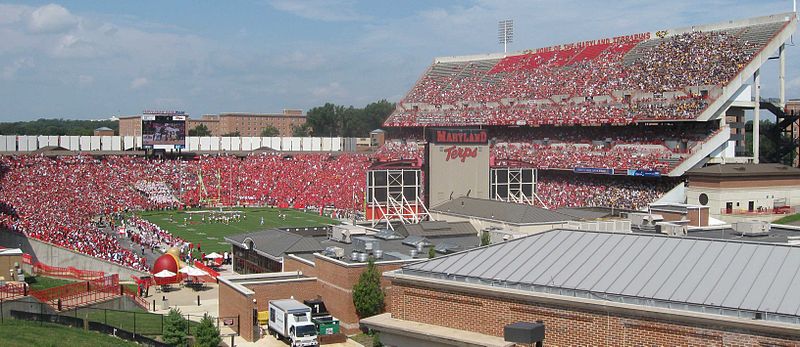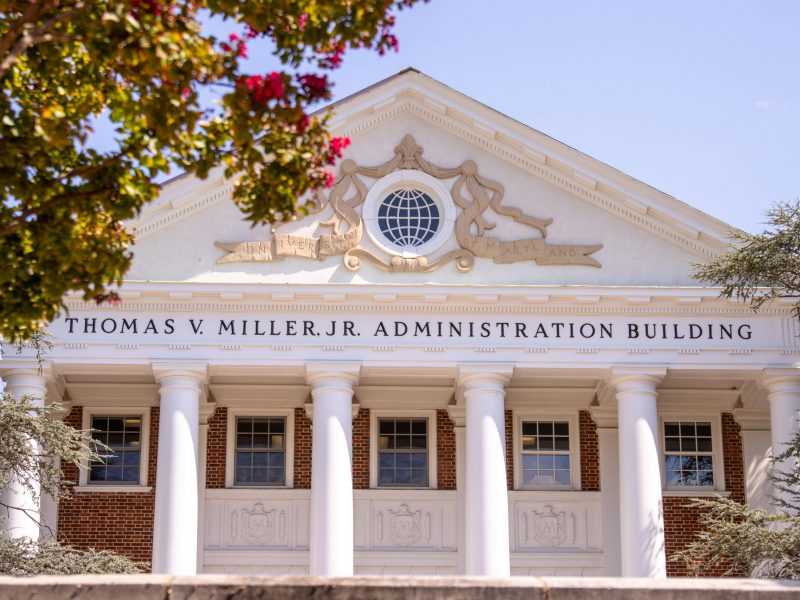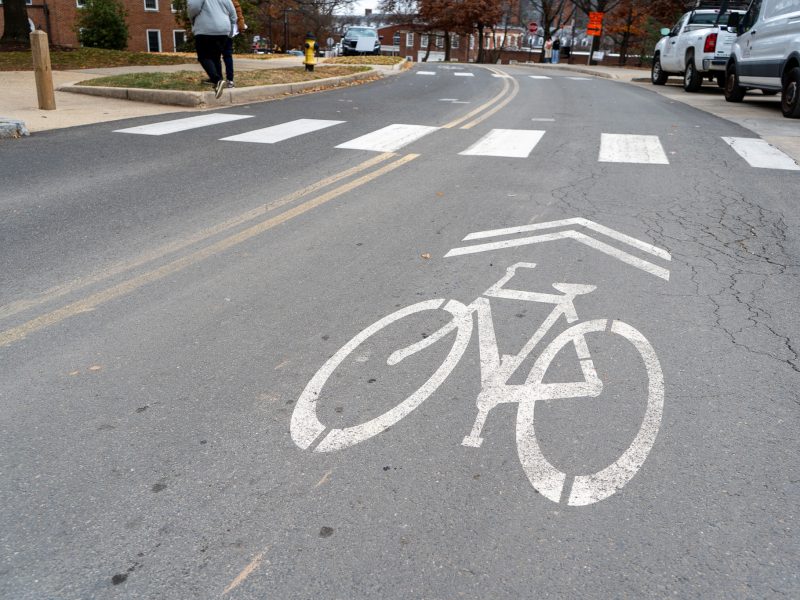The pilot year of alcohol sales at the University of Maryland athletic events did not lead to an increase in drinking-related misconduct at games, but also did not reach its goal to generate a profit for student services, university officials said.
The Prince George’s County Board of License Commissioners approved in July the university’s proposal to serve beer at now-Maryland Stadium and Xfinity Center during football and men and women’s basketball games for a one-year trial period.
Beer sales during athletic events totaled about $950,000, according to a report by a campus assessment group. However, these sales “didn’t really make money” in the first year because of hundreds of thousands of dollars in startup costs that were necessary to begin serving beer, said Colleen Wright-Riva, Dining Services director.
Because these were largely one-time costs, Wright-Riva said she hopes to see sales create a larger profit in the future. Bad weather and low turnout at games also hurt the university’s sales goals, she added.
Infrastructure changes in Maryland Stadium and Xfinity Center totaled about $260,000, Wright-Riva wrote in an email. These expenses covered additional refrigeration, lower refrigeration temperatures, power and data lines for portable locations and reinforcing floors to support kegs, said Joe Mullineaux, Dining Services senior associate director.
“It didn’t meet the numbers that we thought it would,” Wright-Riva said. “But I think we both have high confidence that in the years to come it will be an opportunity for the university to see a surplus that they can use for the benefit of students.”
Beer-serving equipment cost about $322,000, while additional equipment within concession stands cost about $60,000, Wright-Riva wrote.
This university also spent about $12,000 on signage and marketing materials and about $105,000 on ID-checking devices, employee training and other training materials, she added. No employee can touch alcohol without training in alcohol service, and more than 1,100 employees received training this season, Mullineaux said.
There were also additional labor costs and the cost of the beer itself. Almost $200,000 in sales went toward student programming, primarily Terps After Dark, a six-week initiative promoting alcohol-free events, Wright-Riva said. The event cost about $150,000, vice president of student affairs Linda Clement told The Diamondback in November.
In an email sent to the campus community in June prior to the start of the 2015-16 year, university President Wallace Loh estimated net revenue from beer sales would be approximately $500,000 per year. Loh wrote that this money would be earmarked to expand student support services such as mental health counseling, sexual assault prevention and responsible drinking programs.
But because sales didn’t generate as much revenue as officials anticipated, mental health counseling and sexual assault prevention did not receive funding this year, Clement said. The administration still plans to fund these initiatives in future years when sales become more profitable, she said.
Student Government Association President Katherine Swanson said she had hoped to see money go directly to the Counseling Center, as improving mental health services is one of her priorities. While she didn’t think Terps After Dark was a bad program, Swanson said she would have liked to see some of that money used in a different way.
“They had pretty good attendance, but I don’t think it was what we were envisioning, and we are, you know, the voice of the students,” she said.
Swanson has talked with the Student Affairs office about devoting money from next year’s beer sales to hire more counselors, decrease student wait times and increase the number of sessions a student can be seen, but said she is worried there is no guarantee the money will be allocated for these purposes.
“I don’t think the administration is evil and they’re trying to keep this money from going anywhere. … I just want to make sure we stay on them so that it actually goes where it’s supposed to go,” she said. “It does worry me that we don’t have a written agreement.”
While there is no written contract or safeguard, former SGA President Patrick Ronk said there is a “good-will agreement” between the administration and the SGA, and the money raised from concessions must stay within the student affairs office. It cannot go back to the athletic department, and administrators have promised that it will go toward mental health, sexual assault prevention and alcohol alternative events, he said.
“President Loh and Dr. Clement have promised to use it for those three things from the onset,” Ronk said. “And I trust them, personally.”
In the coming years, beer sales will generate “a lot of money for a lot of people,” including funding for mental health services, Ronk said. He emphasized that the decision to implement beer sales was not driven by profit.
“The money was a nice touch, but we really did it because of the drinking culture,” Ronk said. “In terms of any metric other than money this was a really big success, and the money will come in a couple years essentially.”
In his letter to the campus community, Loh wrote that serving alcohol at athletic events is consistent with the university’s strategy to “‘normalize’ student drinking behavior, so that it occurs safely and responsibly in a monitored environment, in an effort to combat high-risk binge drinking.
An assessment group evaluated trend data on the use of fake IDs, arrests, medical transports, student disciplinary referrals and other negative consequences over the past three to four years, said John Zacker, student affairs assistant vice president. The group found little to no evidence to suggest beer sales contributed to an increase in these negative consequences, added Zacker, who chaired the group.
During the 2015 football season, one fake ID was confiscated in Maryland Stadium, according to the group’s report. Arrests in Maryland Stadium increased from one in 2014 to three in 2015, but overall arrests across the campus on game days have decreased over the past three years, the report stated.
This is not enough of a negative change to attribute the increases to alcohol sales in the stadium, Zacker said.
“If we saw a dramatic statistically significant difference, then alcohol might have been a contributing factor,” he said.
There have been four student disciplinary referrals for alcohol-related offenses in Maryland Stadium in the past three years: two in 2013 and two in 2015, according to the report. The number of ejections and refusals to enter — which are primarily the result of intoxication or attempts to bring alcohol into the stadium — decreased at both Maryland Stadium and Xfinity Center in 2015, possibly due to increased security, the report said.
There have been no alcohol-related arrests at men’s or women’s basketball games for the past four seasons, and no alcohol-related student disciplinary referrals from Xfinity in the past three years, the report said.
While many people were skeptical about the university’s proposal to serve beer on the campus, Mullineaux said Dining Services took very strict measures to control alcohol consumption at the athletic venues. At least one liquor board inspector, sometimes three or four, attended every sporting event, and Dining Services also used ID scanners, UV lights and ID books to discourage the use of fake IDs, Mullineaux said.
“I believe all the skepticism is gone because they saw what a great job we did in controlling it and in promoting responsible drinking,” Mullineaux said. “We had some of the toughest regulations really in the state of Maryland.”
The Athletic Council will vote May 23 on whether it recommends that beer sales continue, council chairman Nicholas Hadley said.



